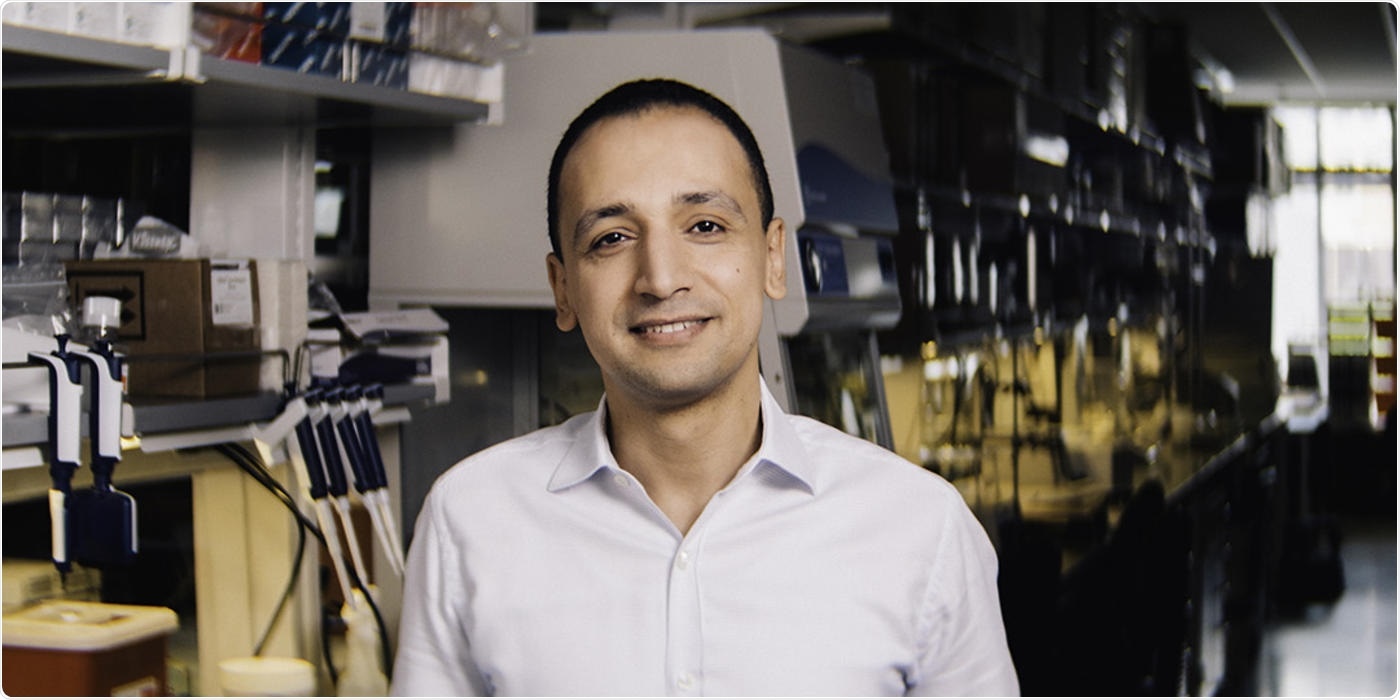Recent research by scientists from the Wistar Institute, an international biomedical research leader in immunology, cancer, infectious disease, and vaccine development, revealed how major features on the surface of HIV-infected cells help the disease avoid detection by the immune system.

Mohamed Abdel-Mohsen, PhD, Study Co-Author and Assistant Professor, Vaccine & Immunotherapy Center, The Wistar Institute. Image Credit: The Wistar Institute.
The study also reveals how to disable these features. The observations are published in the journal PLOS Pathogens. This study is an initial step towards a novel class of treatment targeted at not just inhibiting virus replication but also destroying cells harboring persistent virus that hinders the healing of HIV infection.
We identified a glyco-immune checkpoint interaction as a novel mechanism that allows HIV-infected cells to evade immune surveillance. And we developed a novel approach that selectively targets these interactions on the surface of these infected cells.”
Mohamed Abdel-Mohsen, PhD, Study Co-Author and Assistant Professor, Vaccine & Immunotherapy Center, The Wistar Institute
A cure or long-term remission is still the objective of HIV research. The present treatments can help diminish HIV to undetectable levels; however, they do not eliminate it. The disease relapses swiftly once the treatment stops. HIV also enhances the risk for other health problems like cardiovascular disease, neurological disorders, and cancer even when controlled.
For recent research, scientists examined a type of sugar molecule named sialic acid on the surface of HIV-infected cells. These sugars attach with specific receptors named siglecs on the surface of disease-fighting “natural killer” immune cells.
Upon activation, these receptors function as inhibitors, restraining the killer cells and causing them to stop killing.
We thought, ‘is it possible that these HIV-infected cells are using this interaction—covering themselves with these sugars to evade the natural killer immune surveillance?’”
Mohamed Abdel-Mohsen, PhD, Study Co-Author and Assistant Professor, Vaccine & Immunotherapy Center, The Wistar Institute
The laboratory of Abdel-Mohsen discovered that these infected cells take advantage of this inhibitory connection to avoid immune surveillance. Scientists later analyzed if the killer cells can become more effective at killing HIV-infected cells by manipulating the connection.
Initially, they observed that disabling the inhibitors from the killer cells releases their complete killing potential. But this resulted in the immune cells attacking both healthy and unhealthy cells indiscriminately. The scientists later turned their attention to the HIV cells.
They employed an enzyme named sialidase to eliminate the sialic acid sugars that activated the immune inhibitors. This too affected all cells resulting in the killer cells destroying indiscriminately. Eventually, they created a sialidase conjugate associated with HIV antibodies.
This antibody-sialidase conjugate targets the sialic acid on HIV cells alone. When the sialic acid was eliminated from these cells, the killer immune cells attacked and destroyed the HIV-infected cells, and not the healthy cells.
Abdel-Mohsen says, “The killer cells become a super killer for the HIV-infected cells and they now attack them in a selective manner. The discovery could be a missing link in the ‘shock and kill’ approach to HIV treatment that has been a focus of research for the past several years.”
This two-step mechanism involves first “shocking” the HIV out of latency so that it facilitates identification and then stimulating the immune system to “kill” the virus once and for all. Even though efficient techniques are identified to reverse latency, researchers have not yet identified a means to make HIV-infected cells more destroyable once reactivated.
“We may have the shock, but we don’t have yet the kill,” Abdel-Mohsen said. “Our method actually increases the susceptibility of HIV-infected cells to killing, which is one of the top unmet needs in the HIV field,” states Abdel-Mohsen.
The study’s first author Samson Adeniji, PhD, a postdoctoral fellow at Wistar, remarked that the group’s approach can be examined in combination with widely neutralizing antibody therapies presently being studied in clinical trials.
By combining approaches, we could turn these immune cells from a cop into a kind of Robocop.”
Samson Adeniji, Study First Author and Postdoctoral Fellow, The Wistar Institute
The scientists also observed that along with HIV, the approach can have a clinical application in treating other infectious diseases that might avoid the immune system, including hepatitis and COVID. The researchers further intend to proceed with animal studies to analyze their observations in vivo. They are also analyzing other sugar molecules on HIV that might perform a similar role as sialic acid.
Abdel-Mohsen concludes, “HIV-infected cells are likely evading immune surveillance through many potential glyco-immune checkpoints. We are investigating other mechanisms and how to break them.”
Source:
Journal reference:
Adeniji, O. S., et al. (2021) Siglec-9 defines and restrains a natural killer subpopulation highly cytotoxic to HIV-infected cells. PLOS Pathogens. doi.org/10.1371/journal.ppat.1010034.